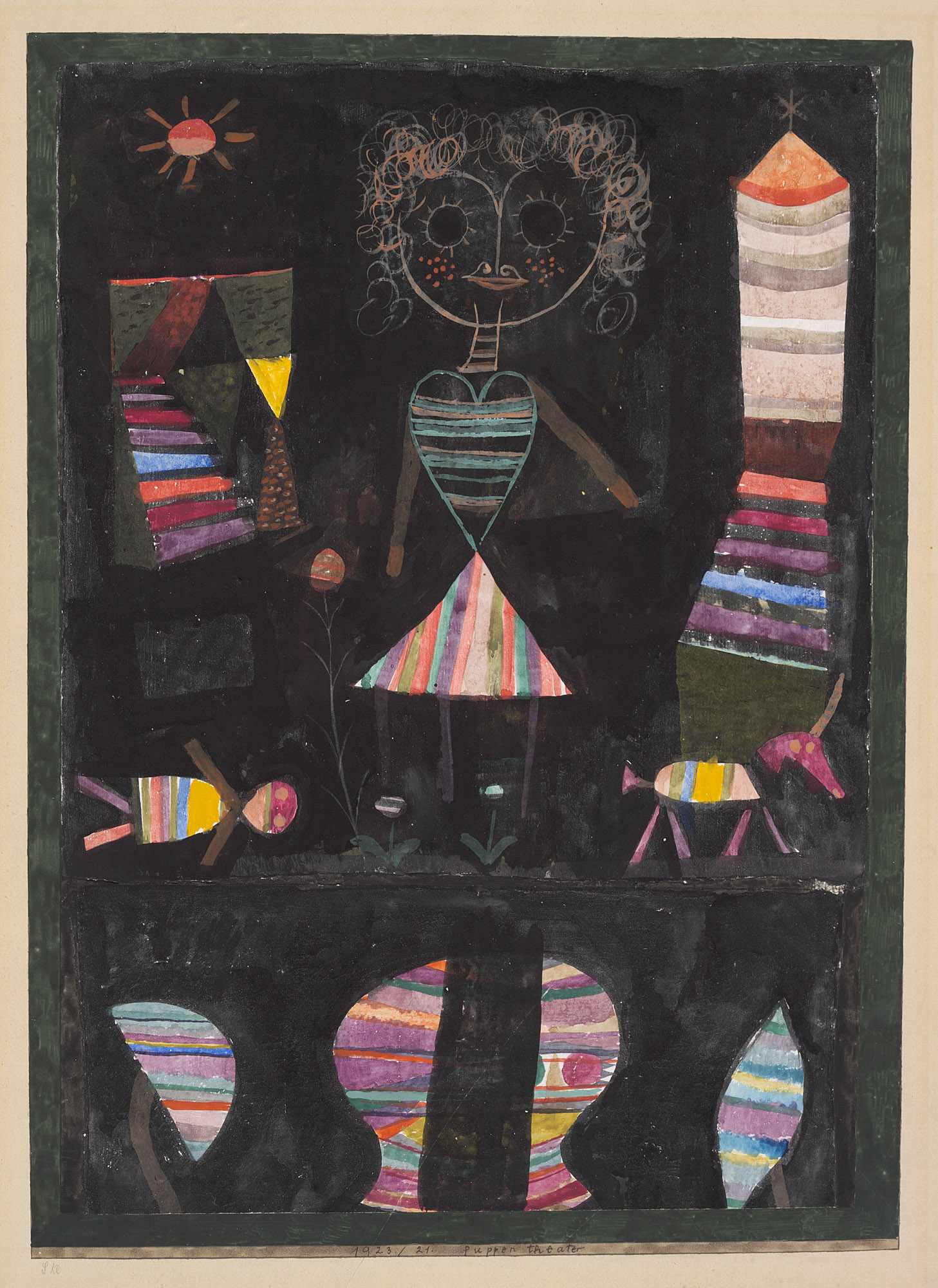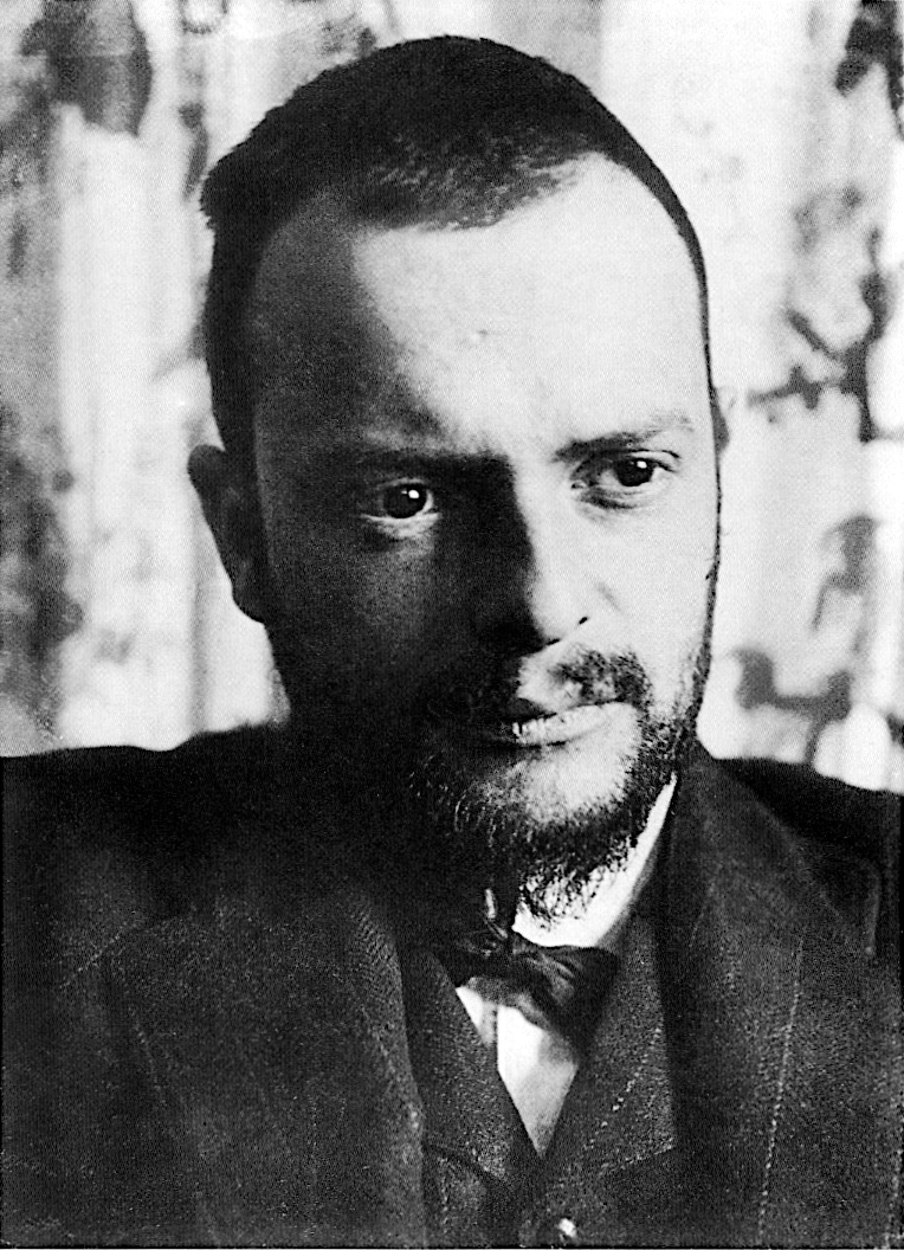Like Picasso, Klee was also seeking for simple, modern means of expression. But unlike Picasso, who was impressed by the magical charm of “primitive“ sculpture, Klee discovered the original sources of art in his own children’s drawings. Initially he approached a reduction of form cautiously. In later years he developed an intentional naivety into his specific form of expression.
In the water colour “Puppet theatre“ the theatre becomes the imaginary stage of childhood. The sheet hides depths which are unexpected at first sight; The brightly coloured, stripe-like structured figures stand out from the dark background like a shining negative but still remain as if written on. The puppet on the floor seems to have been left unnoticed, the small unicorn on the right, steps stubbornly forward. The duplicity of the picture’s message is in accord with the technical process of the painting; It is made up of two individual parts and Paul Klee touched up the gap with black watercolor. The lower part is the fragment of the sheet “Still life {{with the Dice.}}“, which Klee registered in his Work Catalogue under the next number 1923, 22. Seen in this way, the Puppet Theatre becomes a stage with a double floor and a vegetative “Underworld.”We present today's masterpiece thanks to Zentrum Paul Klee in Bern where until March 12th, you can see the exhibition "Paul Klee and the Surrealists".
It is the first comprehensive exploration of Paul Klee’s relationship with Surrealist artists in Paris in the 1920s and 1930s. The exhibition assembles a large number of works by Surrealists including Max Ernst, Joan Miró, Hans Arp, Alberto Giacometti, André Masson and Salvador Dalí. Worth visiting!


 Paul Klee
Paul Klee